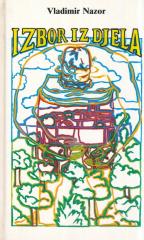
Sabrana djela X: Staze, lica, predeli
"Paths, faces, landscapes" is a collection of essays and writings by Ivo Andrić, first published in 1963. This work differs from Andrić's fiction because it deals with philosophical, introspective and autobiographical considerations.
Through fragmentary essays, Andrić reflects on life, human destiny, art, transience and his personal experience.
Contents and thematic highlights:
Tracks: They symbolize life paths, destinies and searches. Andrić reflects on human movement through time and space, considering how the past shapes us and leads us towards the future. The motif of travel is present, both in the literal and symbolic sense, as a metaphor for exploring the world and one's own identity.
Faces: In the center of this section are portraits of people whom Andrić met or who left an impression on him. He writes about their characteristics, life destinies and the importance of these encounters, exploring human relationships and mutual understanding.
Regions: Andrić evokes landscapes and places that were important in his life, with a special emphasis on Bosnia. Natural and cultural landscapes have a symbolic meaning, reflecting the inner state of the narrator and the context of historical events.
"Paths, faces, landscapes" is one of the most subtle and intimate works of Ivo Andrić, which provides an insight into his thoughts and philosophical views. This collection shows Andrić not only as a storyteller, but also as a deep thinker, who observes the world with tenderness and understanding.
One copy is available





